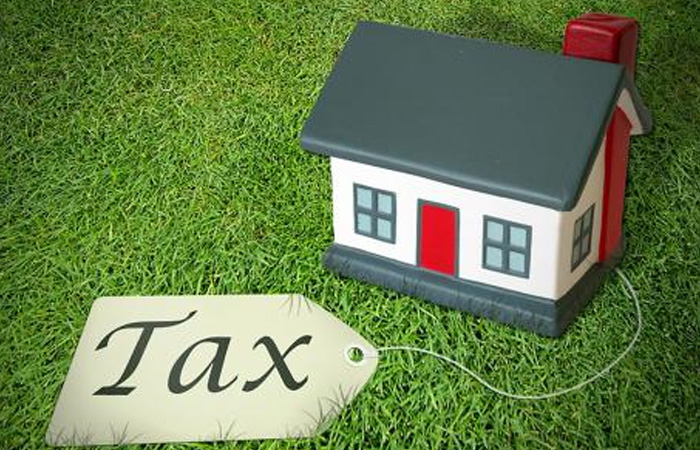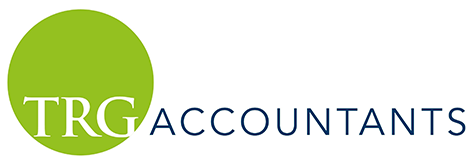Ph: (03) 5304 8200
1220 Sturt St, Ballarat, Vic, 3350
info@trg.com.au
New laws target sharing economy platforms


In an attempt to reign in undeclared income, proposed new laws will require platform providers in the sharing economy to report all transactions through their platforms.
Traditional employment models have shifted in favour of more flexible options including contracting, self-employment and use of labour hire. Consumers are increasingly paying to ‘use’ rather than ‘own’ assets, creating new income opportunities for the owners of assets – like AirBNB. And, the Government believes they are missing out on tax revenues from these payments – income tax from income earned, GST on ride sharing (because the ATO considers all ride sharing a taxi service and as a result GST applies), and capital gains tax on the sale of property used to earn income, etc.
While data matching programs have targeted sharing platforms previously, the proposed laws provide a structured and consistent framework to recognise all revenue earned in Australia through these platforms.
The laws target electronic platforms capturing those that act as intermediaries between buyers and sellers, to more complex arrangements where the platform operator assumes much of the inherent risk in the transaction between the buyer and the seller, play a quality assurance role, and ensure a seamless experience for the buyer and seller. The laws do not rely on the platform processing payments and will reach to those who use third party payment providers.
If implemented, the laws will apply to ride sharing and accommodation services from 1 July 2022, and all other services from 1 July 2023.
6 Member SMSFs – the issues and opportunities


From 1 July 2021, the maximum number of members a Self Managed Super Fund can have increased from four to six. Why would you have a fund with six members and what are the implications?
Recently enacted laws increased the maximum number of allowable members in an SMSF and small APRA fund from four to six.
Currently, over 70% of SMSFs have just two members and those with four members represent only 4% of the SMSF population. The use of six member funds is likely to be small but adds additional choice and flexibility.
Family groups
Six member funds provide family groups with a vehicle for controlling superannuation savings and investment strategies. For families with more than four members, previously the only real option was to create two SMSFs (incurring extra costs) or place their superannuation in a large fund.
A larger fund also offers a level of protection if a fund member is travelling overseas for a prolonged period of time. The residency rules require, amongst other things, 50% of members measured by market value to be in Australia.
Estate planning
Estate planning is a benefit of the new laws particularly tax-effective intergenerational wealth transfer as the assets of a fund generally are not part of the estate. Take the example of a family business that holds the commercial property of the business in their family SMSF. If the parents die, the children might keep running the business and maintain the commercial property within the SMSF as an asset. Holding assets within the SMSF also provides a level of asst protection from creditors.
The problem areas
- Investment decisions within a fund - Problems can occur when members have different investment needs, for example parents might be closer to retirement while the children are focussed on the longer term. The investment strategy of the fund may not meet everyone’s requirements.
- Disputes – the more members in a fund the greater the potential for disputes. For those with legal capacity to be a trustee (18 or over), the rules relating to the appointment and dismissal of trustees, voting rights and meetings need to be clear.
- What happens when a member dies – steps need to be taken to ensure that when a member of the fund dies, their wishes are respected. For example, appointing a legal personal representative as trustee, reversionary pensions or binding death nominations.
Who cannot have a six member fund?
Not all SMSFs will have the option to allow six members because in some instances, the number of individual trustees that a trust can have is limited to less than five or six trustees by State legislation (Queensland for example). In these cases, fund members might opt to use a corporate trustee.
Administrative impact on an SMSF
The change from four to six members updates the definition of an SMSF, and as a result, has a practical impacts across other Acts and Regulations.
Sign-off requirements for an SMSF’s accounts and financial statements will change. Currently, if an SMSF has more than one director member, its accounts and statements must be signed by at least two members in their capacity as individual trustee or as a director of a corporate trustee. As there cannot be more than four members of an SMSF under the current rules, these requirements ensure that all members sign the accounts and statements of SMSFs with one or two members. For SMSFs with three or four members, at least half of the members must sign its accounts and statements for an income year. Under the updated requirements, an SMSF with one or two directors or individual trustees must have its accounts and statements signed by all of those directors or trustees. For all other SMSFs (that is, those with between three and six directors or trustees), the accounts and statements of the SMSF must be signed by at least half of the directors or individual trustees.
Am I taxed on an insurance payout?

 Australia has had its fair share of disasters over the last few years – drought, bushfires and floods – that have ramped up the volume of insurance claims. Most people would assume that if and when they need to claim on their insurance, the insurance payout covers the damage and is not income assessed for tax purposes - but this is not always the case.
Australia has had its fair share of disasters over the last few years – drought, bushfires and floods – that have ramped up the volume of insurance claims. Most people would assume that if and when they need to claim on their insurance, the insurance payout covers the damage and is not income assessed for tax purposes - but this is not always the case.
Insurance payouts for damaged or destroyed personal items are generally not taxed. For example, any insurance payout you receive for your family home won’t necessarily be taxed. But, the rules are different if you have used your home to produce an income, for example, you have used part of your home as a home business or you have rented out part of your home.
The rules are also different if the item is a personal asset costing more than $10,000 or if the asset is a collectible that cost more than $500. Where the insurance proceeds exceed the original cost of the asset, that is, the asset appreciated in value, then capital gains tax might apply.
And, if the asset damaged is related to a business or an income producing asset like a rental property, the rules are also different.
Business premises, trading stock and depreciating assets
For businesses that have had trading stock damaged or destroyed, any insurance payout is taxable. For example, the payouts on claims coming through from the enforced lockdowns for spoiled perishable stock would need to be included in the business’s tax return. This is because the insurance premiums would have been claimed by the business as an expense. It is just a question of how the insurance is taxed.
If your business premises are damaged and the insurance covers repairs, then the amount you receive is generally taxed as income if you can claim a deduction for the repair costs. Where the premises are damaged or destroyed, then we’ll need to work with you to identify if you have made a taxable gain or loss.
When it comes to depreciating assets like machinery, then it starts getting more complex. In general, if the insurance payout exceeds the written down value, then the payout is included in the business’s assessable income, and if less, you can claim a deduction for the difference. However, there are also special rules for work cars, small businesses, and where a replacement item is purchased.
Rental properties
A rental property is an income producing asset and, in most cases, the cost of insurance policies relating to the property would have been claimed as an expense. For example, if you receive a payout for your rental property as a result of a disaster, generally, you will need to include at least part of this amount as income in your tax return. This could include insurance payouts for loss of rental income, repairs, replacements of destroyed assets, or money received from a relief fund.
The treatment of the insurance proceeds depends on what the payout is for, how the insurance is used, and whether the rental property was vacant or in use.
A recent case before the Administrative Appeals Tribunal (AAT) shows how tricky this area of the tax rules can be. In this case, the taxpayer initially received insurance proceeds of $24,000 for lost rental income after their property sustained storm and flood damage. The taxpayer had declared this amount as income. All good so far.
Then, the taxpayer received an additional $250,000 from the insurer with the payment described as “in consideration of the taxpayer releasing the insurer from all liability past, present and future under the insurance policy”. The taxpayer did not believe this money was for him to repair his property so did not claim it in his tax return. But, he did claim a deduction for repair costs totalling $130,000 in two income years.
The ATO subsequently audited the taxpayer and issued an assessment for the full $250,000. The AAT agreed with the ATO even though the taxpayer had only claimed $130,000 in repairs. It’s possible this case will go to appeal but it serves as a warning that any lump sum payouts need to be very carefully assessed and dealt with.
If you have been impacted by a disaster and are uncertain of how any insurance proceeds will be taxed, please talk to us and we can work with you to help you understand your position.
What lockdown support is available in Victoria?

Support is available if you are impacted by the Victorian lockdowns.
Australia
COVID-19 Disaster Payment
If a state public health order for COVID-19 adversely affects you, Services Australia provides a support payment. This weekly payment helps if you can't earn an income because of a COVID-19 lockdown, hotspot or period of restricted movement.
To be eligible:
- you can’t attend work and have lost income because of COVID-19 restrictions
- you can't access appropriate paid leave entitlements from your employer
- you’re not receiving an income support payment, a state or territory pandemic payment, Pandemic Leave Disaster Payment or state small business payment for the same period.
The payment is:
- $600 each week if a person has lost 20 hours or more of work a week, or
$375 each week if a person has lost between 8 and 20 hours of work.
Find out more and apply
Bank support for Australian customers
Business and home loan customers impacted by COVID-19 lockdowns across Australia are encouraged to contact their bank to see what support may be available.
Victoria
Business support payment
Businesses that successfully applied for the Business Costs Assistance Program Round Two (from the May/June 2021 lockdown) will automatically receive a top-up payment of $4800 ($2,000 announced 16th July, and a further $2,800 announced 21 July).
Businesses that successfully applied for the Licensed Hospitality Venue Fund 2021 (from the May/June 2021 lockdown) will automatically receive a top-up payment of $7200 ($3,000 announced 16th July, and a further $4,200 announced 21 July).
Businesses that didn't previously apply or have become eligible to apply for the Business Cost Assistance Program or the Licensed Hospitality Venue Fund 2021, can apply for July lockdown support payments.
Micro businesses that aren't eligible for state government business support payments because they're not registered for GST can apply to Services Australia for the COVID-19 Disaster Payment. The Victorian Government will establish a concierge service to help these businesses access this support.
There is also additional financial support for Alpine businesses, public event organisers and suppliers and live performers and their suppliers.
Mediation for commercial tenants and landlords
The Victorian Small Business Commission (VSBC) is providing free and impartial mediation to help resolve commercial rent relief disputes in response to the pandemic.
Since the Victorian Government's Commercial Tenancy Relief Scheme ended, commercial tenants are no longer legally entitled to rent relief. The VBSC can help you address rent relief agreements.
Work from home expenses under scrutiny & the perils of browsing Facebook

 If you worked from home during lockdown and spent money on work related items that were not reimbursed by your business, you might be able to claim some of these expenses as a deduction – but not everything you purchase can be claimed.
If you worked from home during lockdown and spent money on work related items that were not reimbursed by your business, you might be able to claim some of these expenses as a deduction – but not everything you purchase can be claimed.
The ATO has stated that it is looking very closely at work related deductions that are being claimed. If you are claiming your expenses, there are three methods you can use:
- An 80 cents per hour short cut method (you will need to have evidence of hours worked like a timesheet or diary)
- The 52 cents per hour method (which excludes phone, internet, or the decline in value of equipment which are all claimed separately), or
- The actual expenses method.
The ATO is particularly interested in those using the ‘actual expenses’ method. To be able to claim a work related expense, it needs to be directly related to the work you do and how you earn your income. The ATO has highlighted four ineligible expenses that are being claimed:
- Personal expenses such as coffee, tea and toilet paper
- Expenses related to a child’s education, such as online learning courses or laptops
- Claiming large expenses up-front (instead of claiming depreciation for assets), and
- Occupancy expenses such as rent, mortgage interest, property insurance, and land taxes and rates, that cannot generally be claimed by employees working from home.
A recent case before the AAT shows how determined the ATO is to crackdown on work related deductions being claimed where there is not a satisfactory nexus between the expense being claimed and the taxpayer’s work. In this case, the taxpayer had claimed car and clothing expenses, and home internet and mobile phone costs. The ATO conceded the car costs but on a reduced deduction. When it came to clothing expenses the ATO conceded that a deduction could be claimed for gloves and a beanie on the basis that the taxpayer worked in cold conditions and that these were protective clothing needed for the job. However, the AAT refused to allow a deduction for the cost of a pair of socks on the basis that they were not protective in nature in their own right – yes, it really does get this detailed.
The taxpayer had also claimed 100% of his home internet expenses but the ATO reviewed this claim and reduced the deductible amount to $50 - a record of the family’s home internet usage demonstrated the internet was used to browse Facebook amongst other non-work related sites.
One of the other issues to come out of this case was the importance of record keeping. If you are going to claim work related expenses, then ensure you have the records to prove your claim.

